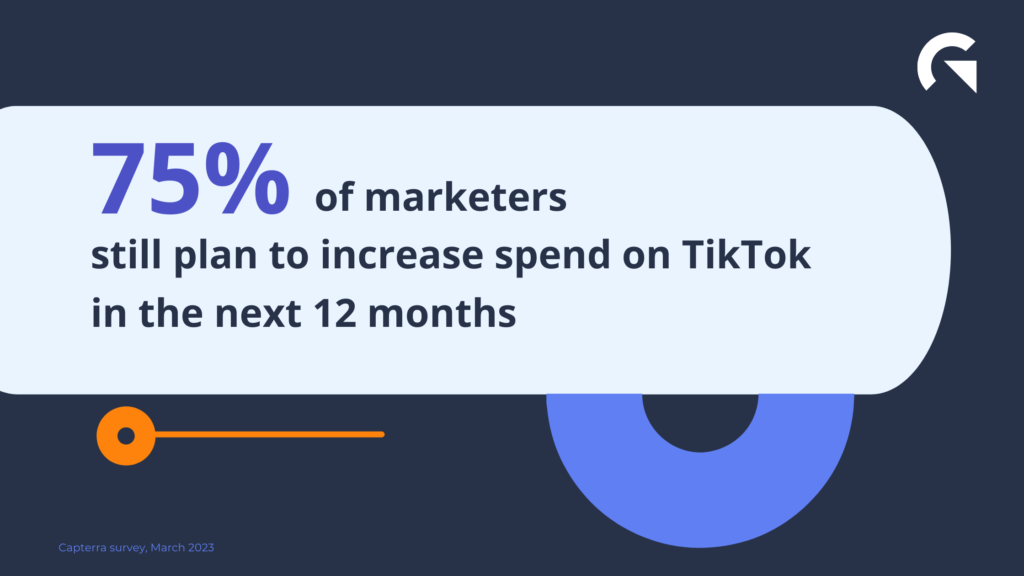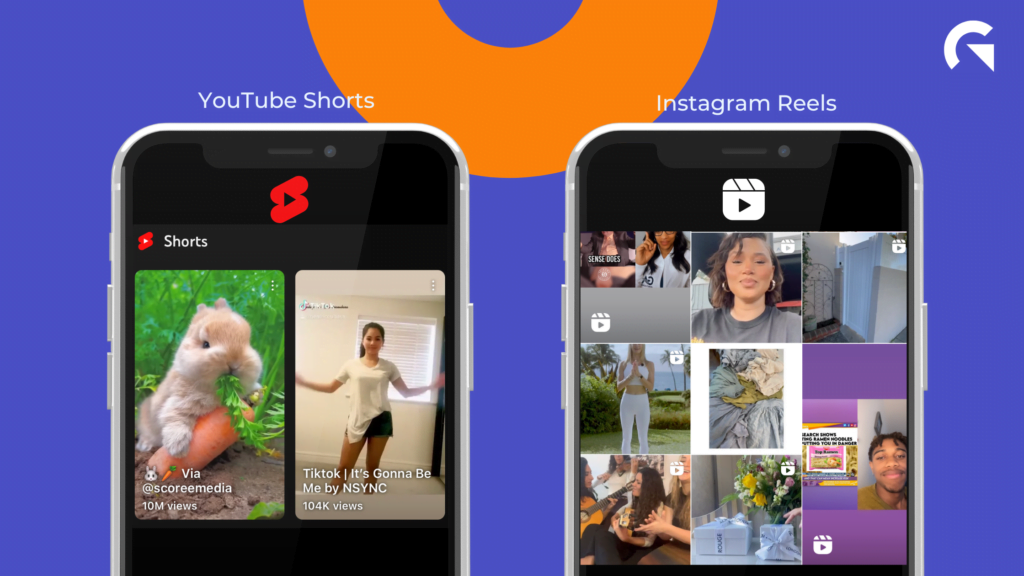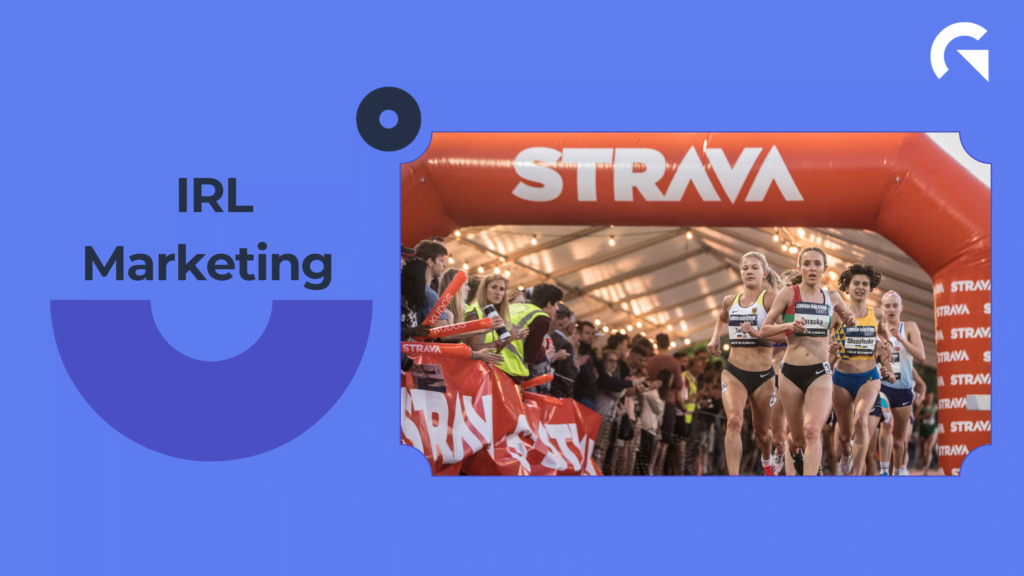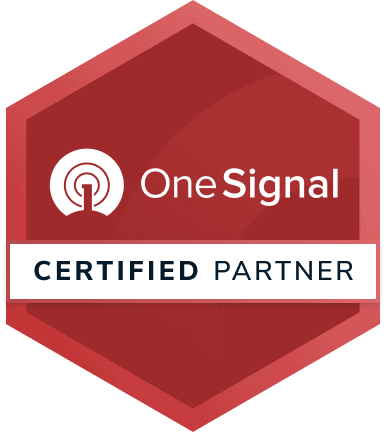TikTok’s Uncertain Future: A Wake-Up Call for Growth Marketers
TikTok has transformed the landscape of social media, captivating millions with its short, engaging videos. But with the US government considering a potential ban, growth marketers must think differently and embrace the art of reinvention.
And while this ban could strike a mighty blow to many brands’ marketing strategies, it also serves as a reminder that the strongest brands have all the right branding pillars in place to pivot and endure regardless of the fate of individual platforms.
The Realities of a Possible TikTok Ban
While a total ban is a possibility, just how likely is it to happen? According to a recent Capterra survey, more than half of respondents (56%) believe it is highly or somewhat unlikely that the government will ban TikTok from operating in the US consumer space. And with 75% of marketers claiming that they expect to increase TikTok spending in the next 12 months, brands don’t seem particularly scared off.

At 75%. growth marketers don’t seem too concerned about ongoing issues surrounding privacy, data or usage of TikTok and its’ parent company, ByteDance
Yet, the potential implications of a national ban cannot be ignored. Should the ban take effect, brands and the growth marketers driving them, must adjust their strategies to maintain user acquisition and brand awareness. While a ban may not be imminent, it is crucial for businesses to be prepared for any changes in the social media landscape.
Pivoting Video Growth Strategies in the Face of Uncertainty
To prepare for a potential TikTok restructure, growth marketers should diversify their campaign strategies by exploring alternative platforms and channels. One possibility is shifting efforts and more ad spend into Instagram Reels and YouTube Shorts which offer similar short-form video content that can help maintain engagement with audiences.

Growth marketing strategies should already have an integrated plan that includes several channels and platforms.
To be honest, Instagram Reels should already be part of your growth strategy. With an average engagement rate for Instagram Reels at roughly 2.7% and considering that huge brands have been investing in Reels since its inception in 2020, Instagram remains one of the “big 3” to be considered as part of a UA marketing mix.
What about YouTube? One could easily argue that YouTube is immensely underrated as a marketing channel. According to the Top Digital Marketing Trends of 2023 by Smartly.io, 48% of respondents reported that YouTube yielded the best ROAS (compared to 35% for Instagram).
And the stats for YouTube Shorts are nothing to scoff at — within a couple of weeks of launching in the US in March 2021, around 1.1 million YouTube Shorts videos were uploaded from 152,000 US accounts with over 46.3 billion views and a 2 billion engagement rate.
Additionally, platforms like Snapchat, and Pinterest can provide alternative avenues to reach target demographics. Maintaining a mobile-first approach in a post-TikTok world will be essential to staying ahead of the competition.
The Importance of Brand:
Back to Growth Basics
The TikTok frenzy also serves as a wake-up call about the importance of having exposure strategies that are grounded way deeper than any one channel or short-term strategy. What matters is the long game. They’re called brand fundamentals.
Beyond focusing solely on social and emerging media, mobile-first businesses must ensure their traditional marketing elements (i.e., the branding pillars) are in order, such as SEO, ASO, IRL (in real life) presence, and public relations.
Here’s what we mean:
-
Search Engine Optimization & App Store Optimization
Regardless of the fate of individual platforms, your brand’s online visibility, and discoverability through search engines and app stores remain vital. Investing in SEO ensures your brand ranks high in search engine results, driving organic traffic to your website and increasing brand awareness. Focus on optimizing your website content, metadata, and site structure to enhance your search engine performance.
Similarly, invest heavily in your ASO efforts. Make sure you’re identifying and optimizing winning keywords consistently and keeping your ASO strategy solid.
-
In Real Life Presence
Even in an increasingly digital world, offline marketing efforts should not be overlooked. Events, print, and broadcast advertising can still be effective in reaching specific segments of your audience. These traditional methods can help solidify your brand’s position, complement your digital efforts, and create a unified brand experience for your customers.
Take Strava for example. This mega mobile brand didn’t reach greatness through Apple Search Ads and Instagram posts alone — Strava sponsors and organizes various sporting events, such as running races, cycling challenges, and outdoor fitness activities. These IRL events help strengthen the Strava community and boost brand awareness while driving user acquisition and retention.

Strava knew that in person events are a booming industry post-COVID, so their growth marketers moved the dial by injecting their sponsorships to major sporting events.
-
Public Relations (PR)
If you really want to achieve next-level growth, a robust PR strategy is essential for managing your brand’s reputation and maintaining a positive public image. Develop strong relationships with media outlets, influencers, and industry experts to amplify your brand’s message and establish credibility. Regularly issue press releases, pitch stories, and participate in industry events to showcase your brand’s expertise and thought leadership.
Another brand success to look at for inspiration is Headspace. They’re pros at leveraging PR to elevate their brand. For initiatives like “Headspace for Work”, their PR efforts included securing media coverage in leading business publications and participating in industry conferences and events. By aligning its brand with mental health and well-being in the workplace, Headspace effectively raised awareness about its app, showcased the value of its offerings, and established itself as a thought leader in the field of mindfulness and mental health.
The uncertainty surrounding TikTok’s future is a valuable reminder of the importance of brand marketing basics and embracing agility and fluidity. By ensuring a strong foundation in these fundamental areas, businesses can maintain a resilient and effective marketing strategy, regardless of the fluctuations in social media platforms.
Related Articles
For Wellness apps, the most challenging approach is the conversion of the user from passive to active. [...]
In the realm of App Store Optimization (ASO) for iOS applications, a relatively untapped yet highly effective strategy [...]
In today's competitive app market, it's crucial for app developers and marketers to reach a wider audience and [...]










